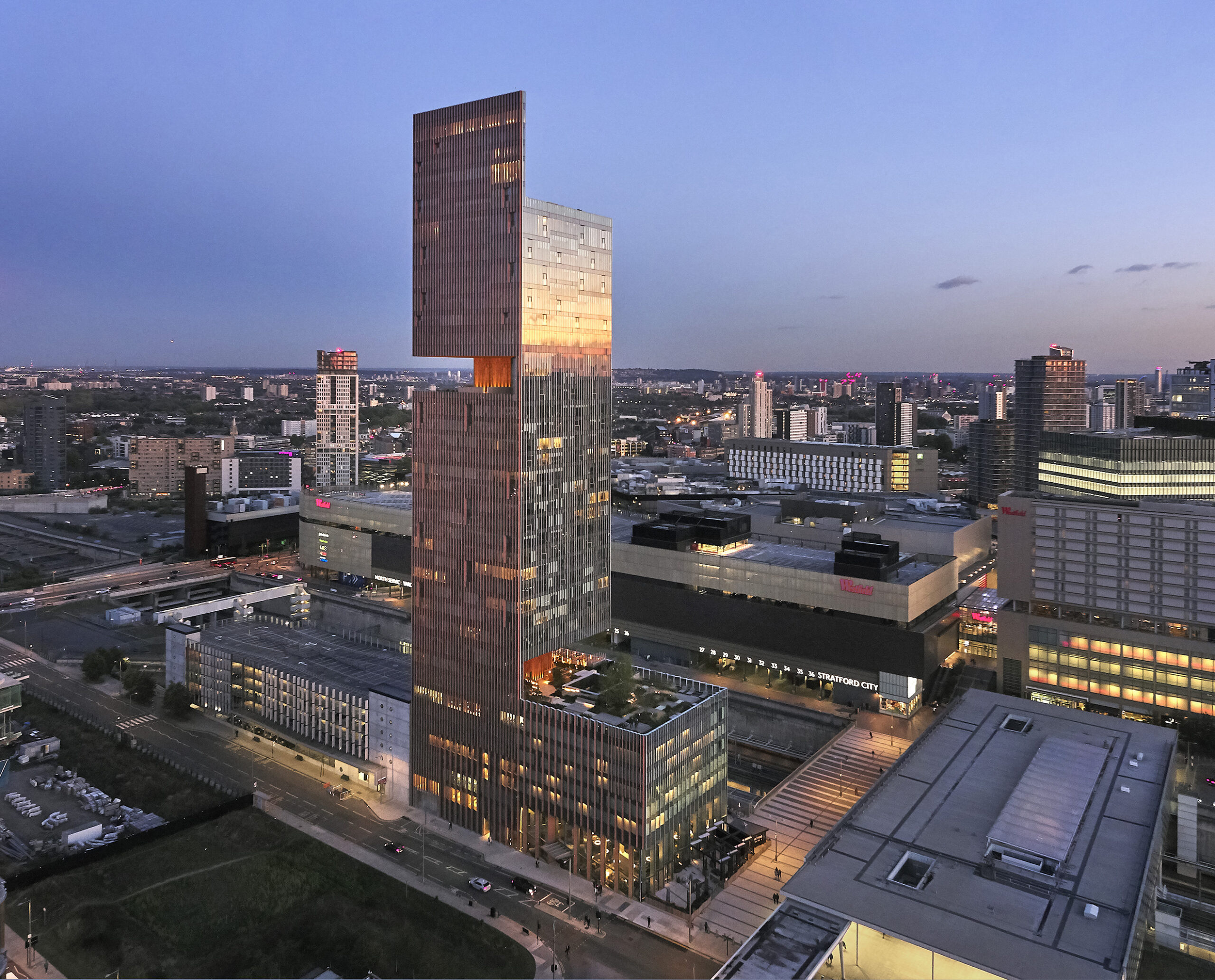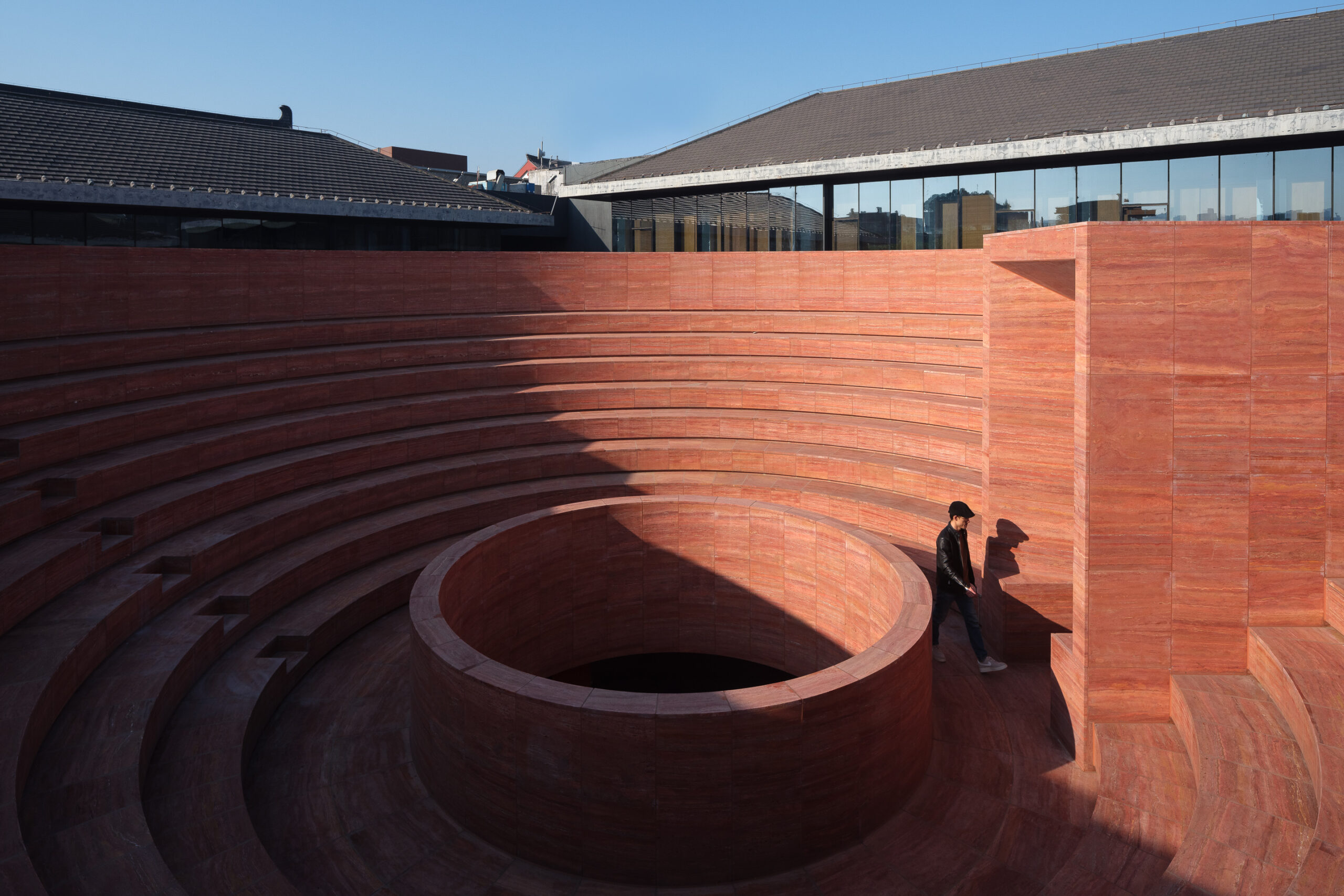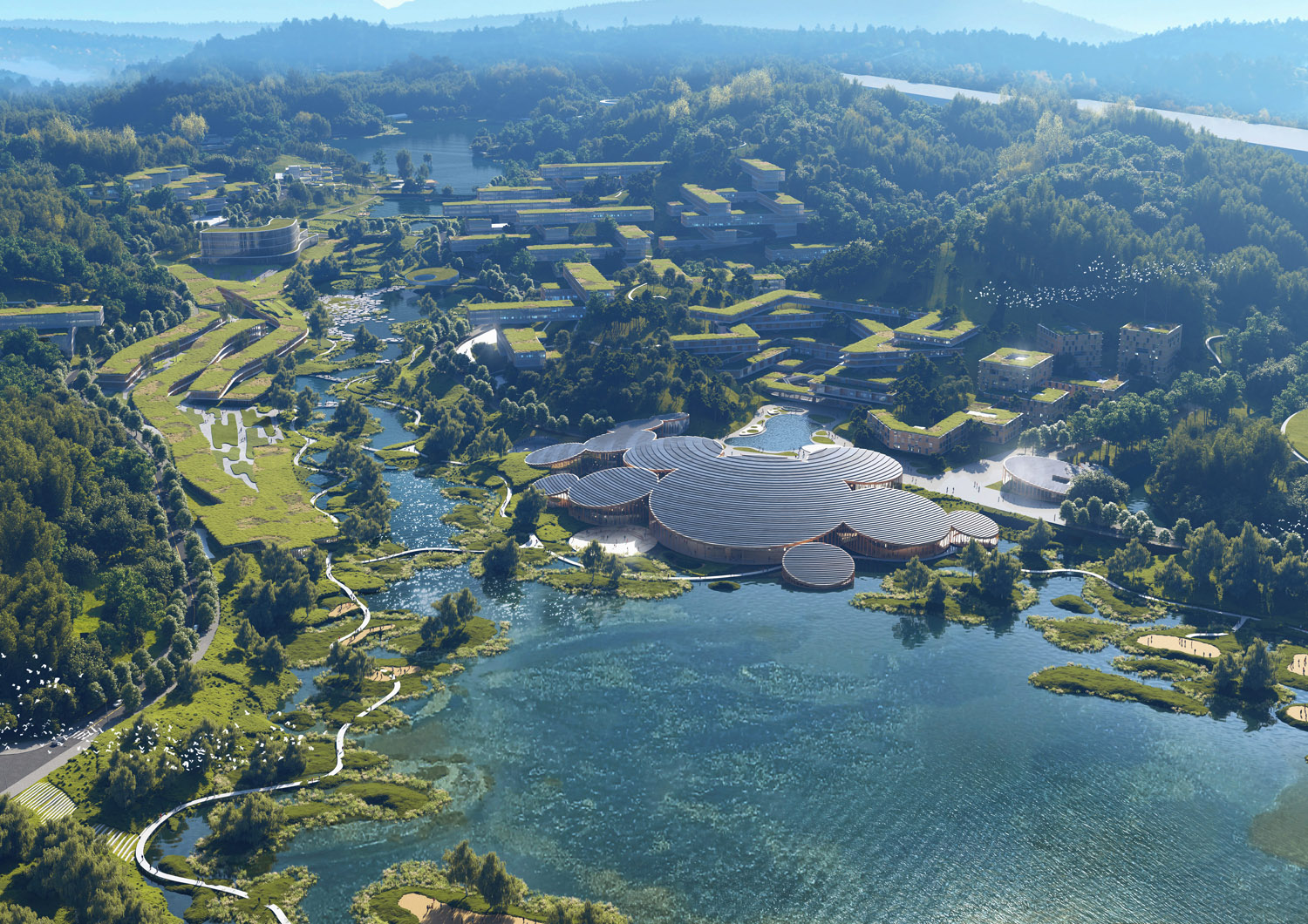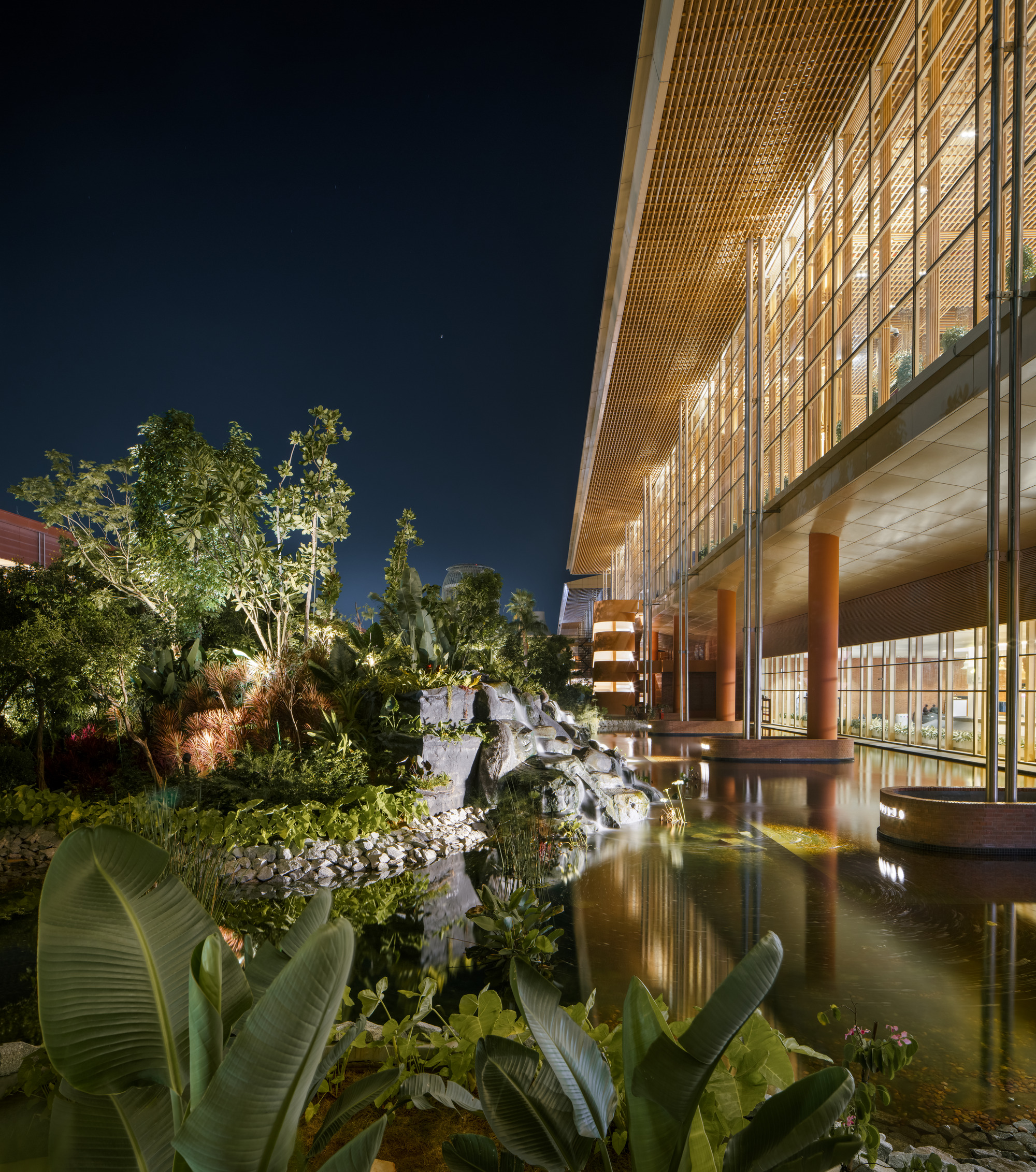Architizer’s 13th A+Awards features a suite of sustainability-focused categories recognizing designers that are building a greener industry — and a better future. Start your entry to receive global recognition for your work!
Nearly one-quarter of the way through the 21st century, one thing is clear: globalization is more present than ever. Specifically in the field of architecture, global challenges such as climate change, overpopulation, affordable housing, resource scarcity etc. require global solutions that operate regardless of local contexts. On the other hand, there is a great shift when it comes to context-sensitive design, with many firms preferring to design for their home country, city or region over expanding internationally, as they seek to create proposals that are more deeply rooted in local culture, climate and community needs.
Consequently, this favoritism of “hyper locality” raises some interesting questions for the world’s architectural trajectory: is it ethical for foreign architects to shape the built environment on other urban settings and more accurately, what happens to all these global firms that are straddling multiple cultures, geographies and climates? Should they retreat back to their home base?
Incision | Nantou City Guesthouse by Neri&Hu Design and Research Office, Shenzhen, China
This overcorrection and even disbelief towards global practices, potentially stems from the past and, more specifically, from the immense global impact, both spatially and intellectually, the International Style had on the world. It began in western Europe in the 1920s and was widely adopted for its practicality, standing as a symbol of industry, progress and modernity. The characteristic austere, simple cubic forms can now be found in almost every city skyline. However, one of the style’s major criticisms was that in its attempt to promote functionality, new technologies and conceptual hierarchy, it became completely incongruent with existing landscapes.
This, in addition to the highly encouraged trend of individuality and locality in today’s society, has often led to equating global practice with uniformity and repetition — dominant traits of the International Style. Still, even though the modernist approach could be deemed as somewhat unsuccessful in terms of responding to local contexts, it became a profound phenomenon, where (for the first time) architecture collectively addressed shared global issues, such as offering a flexibility in construction, advocating for the abandonment of excessive and unnecessary ornamentation and focusing on space utilization rather than intricate forms and façades. Now, a century later, it is perhaps time to acknowledge modernity’s “benefits” as well as disassociate globalism from it, since most practices, even the ones that operate at an international level place a great deal of emphasis to local context.

The Stratford by Skidmore, Owings & Merrill (SOM), London, United Kingdom
Neri&Hu Design and Research Office is one example of an interdisciplinary practice based in Shanghai and Los Angeles, composed of a multi-cultural staff that reinforces the firm’s vision to respond to a global worldview by incorporating overlapping design disciplines for a new paradigm in architecture. Operating between east and west, projects such as Qujiang Museum of Fine Arts Extension and the Relic Shelter | Fuzhou Teahouse draw from local culture, topography and societal norms to craft spatial narratives and in parallel deliver architecture with global weight.
Mecanoo is also a multicultural practice formed by professionals from over 25 countries. The firm’s philosophy follows the motto People, Place and Purpose: to the client’s requirements and the user’s needs (People); the physical context, climate and culture (Place); and the current and predicted potential of a building’s function (Purpose). As a result, each project is uniquely tailored to specific contexts and traditions, while remaining open and flexible for (un)predictable change. The practice’s process has enabled it to deliver culturally significant buildings and create new identities within this highly globalized world.

Qujiang Museum of Fine Arts Extension by Neri&Hu Design and Research Office, Xi’An, China | Popular Choice Winner, Museums, 12th Annual A+Awards

Shenzhen Guangming Scientist Valley by Mecanoo, Shenzhen, China |
MGA (Michael Green Architecture) is also a practice that is leading the way in new construction technologies — specifically timber construction —to benefit communities and environments in distinct contexts. Tackling topics such as ‘The Natural Building Blocks of Architecture’ and ‘Why We Should Build Wooden Skyscrapers’, MGA pairs sustainable technology with social, environmental and political activism within the building industry. One of their most recent projects, the Macbeth Hut, is situated on Mt Macbeth, in British Columbia, Canada and becomes the key piece of the backcountry experience. In parallel, it addresses a global environmental concern that comes with building in the wilderness, utilizing renewable and passive systems to reduce energy demand, low carbon wood structure and interiors, prefabricated Passive House wall panels, passive ventilation, daylighting, and temperature regulation and minimal excavation and site disturbance.
Finally, perhaps one of the most “globally-local” projects is Skidmore, Owings & Merrill (SOM)’s Kempegowda International Airport, Bengaluru – Terminal 2. Inspired by Bengaluru’s reputation as “the garden city,” the project radically reimagines the airport experience by connecting passengers to nature along each step of their journey and create a sequence of landscape spaces that sooth the bustling atmosphere of a traditional airport. Through this project, the firm’s highly collaborative and interdisciplinary approach is exposed, showcasing the lasting value their work has brought to communities around the world.

Macbeth Hut by MGA | MICHAEL GREEN ARCHITECTURE, Whistler, Canada

Kempegowda International Airport, Bengaluru — Terminal 2 by Skidmore, Owings & Merrill (SOM), Bengaluru, India | Jury Winner & Popular Choice Winner, Sustainable Transportation Project, 12th Annual A+Awards
Ultimately, the most successful global firms are those who lean into local knowledge by pairing up with local architects, while bringing the benefits of big resources, teams and experiences from around the world. To celebrate this, this year’s A+ Awards have introduced the category for Best Global Firm, for architecture and/or design firms that demonstrate excellence across diverse global geographies and showcase both global reach and local sensitivity in their work.
Architizer’s 13th A+Awards features a suite of sustainability-focused categories recognizing designers that are building a greener industry — and a better future. Start your entry to receive global recognition for your work!
Featured Image: The Relic Shelter | Fuzhou Teahouse by Neri&Hu Design and Research Office, Fuzhou, China

